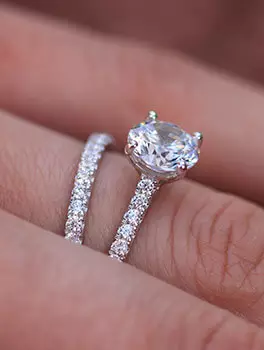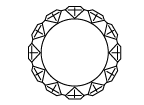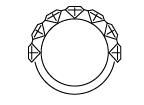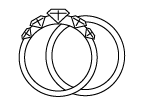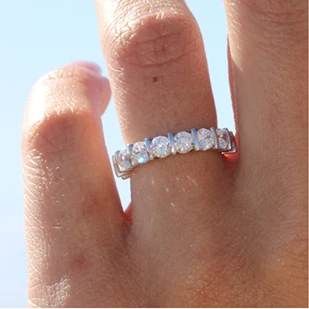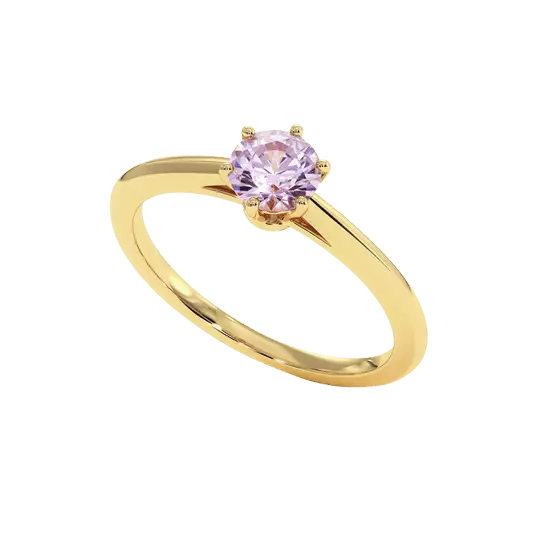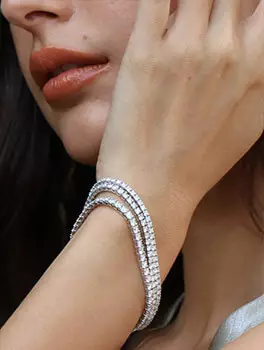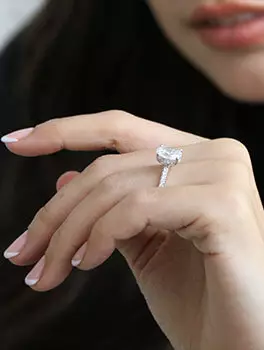Do you own a piece of jewelry and want to know its value? When buying a gold piece of jewelry, it is best to do so in a trusted environment, in order to know what you are getting. However, in some cases, the authenticity of the gold may be questioned, such as when buying jewelry abroad.
Do we own 10 carat, 14 carat, 18 carat gold, or gold plated jewelry? Or if we inherit family jewels, how do we know if it's real gold? Knowing whether a piece of jewelry is made of gold is not always easy. The most reliable way to find out if your jewelry is gold is to go to a jeweler for an appraisal.
However, there are different ways to find out if you are dealing with gold or costume jewelry. If you own gold-colored jewelry but are not sure of their composition, follow this guide to learn how to recognize a solid gold ring.
Check for a hallmark on a piece of jewelry
The hallmark is an official mark made by jewelers, which identifies the origin of a piece of jewelry. For gold rings, the hallmark is always placed on the outside of the ring. In France, there are two mandatory hallmarks for gold jewelry:
The master's or responsibility hallmark, taking the form of a diamond or an oval, it allows to know who manufactured the jewelry.
The State hallmark informs of the number of carats present. If the hallmark is made in Europe, the hallmarks appear as symbols:
• The Seahorse means that the ring is made with 100% pure gold (24 carats), but it is too soft to be used in jewelry.
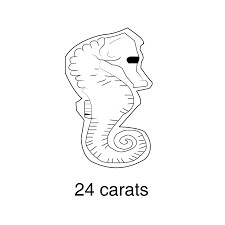
• The eagle head refers to 18 carat gold, or 75% pure gold.
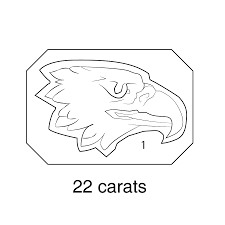
• The St-Jacques Shell means that the ring is made with 58.5% pure gold (14 carats).

• The clover (three leaves) refers to 9 carat gold (37.5% pure gold).
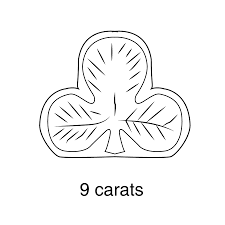
In other countries, like Canada, the hallmark on gold jewelry is much more discreet and only indicates this grading: 10K, 14K, 18K and 24K.
As for gold-plated jewelry, the hallmarked number is always followed by a p, or gf if the jewelry was made in an English-speaking country.
For bracelets, curb chains, chains or necklaces, the hallmarks are located on the ends of the clasps. Pendants, on the other hand, have their hallmark located on the bail.
However, some pieces of jewelry are too thin and do not have enough space to contain a hallmark. Moreover, rings are worn in contact with the skin and the hallmarks can fade over time and wear of the jewelry.
Recognize the different colors of gold
Each gold color is made by mixing several metals, here are their compositions:
• Yellow gold is 75% pure gold, 12.5% silver and 12.5% copper. White gold is an alloy of gold with silver and palladium, which is then coated with a layer of sodium.
• Rose gold is made up of 75% pure gold, 10% silver and 15% copper.
The Magnet Test
The magnet test is one of the most well-known and easiest tests to perform at home. It involves placing a magnet near the gold ring to see if it is authentic. Gold is not a magnetic metal. Therefore, if the jewelry is placed near a relatively strong magnet, it should not be attracted. Conversely, if it moves and approaches, it means that your jewelry is fake or gold-plated.
Gold Testing with a Touchstone
This method is the most well-known because it allows you to test without damaging the ring. To perform this test you need: a touchstone, and soften royal water (a mixture of hydrochloric acid and nitric acid).
You simply need to rub your ring against a special stone called a "touchstone". You don't need to rub the ring for long, you will quickly see traces appear. Once your ring leaves a mark on the stone, an acid solution must be used to determine the carat content of the ring. If the trace disappears, you can immediately conclude that your gold ring is not really one. But if the trace remains after the acid is applied, then the jewelry is gold.
Gold Testing with Nitric Acid
This test is not very complicated and it is an effective process. To perform it you will need to place your gold jewelry in a stainless steel container and then add a few drops of a nitric acid solution. This acid helps to authenticate gold due to its oxidizing properties on certain metals such as silver and copper. After pouring the acid, you must wait for the chemical reactions, if a greenish or whitish reaction occurs, then your jewelry is not pure gold. If your jewelry is genuine, it will not react to the acid. Be careful this test is normally carried out in jewelry stores by professionals, as it is risky. Nitric acid is a very powerful acid that can irritate the respiratory tract and cause serious skin lesions. If you use it, you must therefore be careful to respect the usage precautions and handle it carefully.
Bleach Test
This technique is very simple to apply, and very short. The goal is to cause the jewelry to oxidize in order to verify its authenticity. You must put your jewelry in a bleach solution for more than 24 hours. If, after the 24 hours have passed, you do not notice any oxidation on the jewelry, then it is pure gold. Otherwise, the jewelry is not genuine, it is plated metal.
Test with a jewelry cleaning cloth
Very easy to perform, this test requires only your jewelry and a jewelry cleaning cloth. You simply rub your jewelry with the cloth and then examine it. If the gold color of your jewelry has come off, tarnished or if it reveals another color, then the jewelry is not real gold but gold plated.
Other tricks to know if a piece of jewelry is gold
There are also other tricks that can help you know if your jewelry is gold.
Solid gold is a metal that weighs more than silver, if you find your engagement ring is light when weighing it with your hand, then it is probably not gold but silver.
Also, pure gold is a metal with an extraordinary luster. If your diamond ring is gold, it should be shiny after cleaning.
If the ring is old or worn and shows a different color or a different metal, it's not pure gold. Please note that the ring may be gold or silver plated, in which case it is normal for there to be differences in colors.
Of course, if you still have doubts, the best solution is to go to your jeweler who will be better able to assess your ring.
Related Articles:
>> Platinum





















